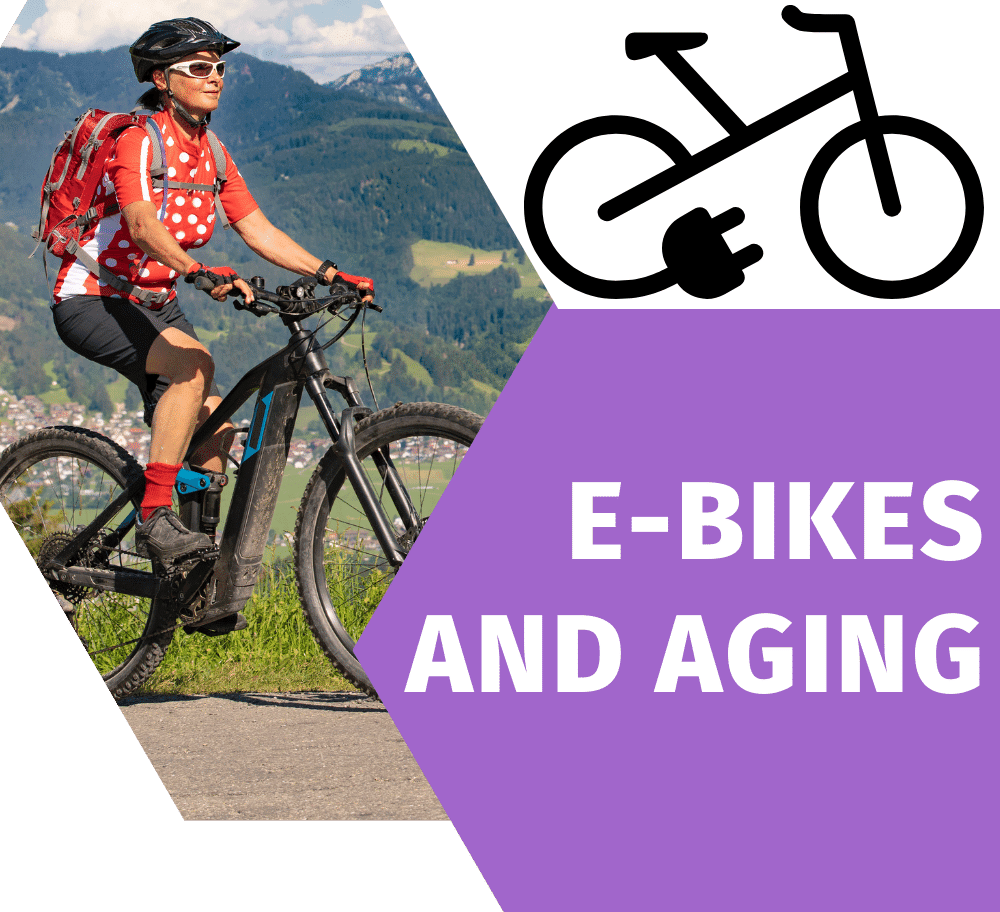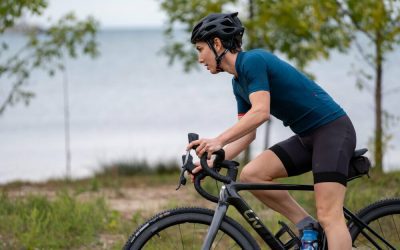We wanted to pose a question today: What if electric bikes (e-bikes) and electric mountain bikes (e-MTB) could keep you and your friends riding and moving in nature for many more years, compared to deciding you’ll never use one? Hear us out! You do not NEED to get an e-bike today but we encourage you to keep an open mind.
E-MTB will keep you moving
There are some very good use cases for this developing technology and they are too often dismissed as ‘cheating’ or ‘not a good workout.’ For a variety of reasons–aging, illness, injury–athletes find that there is a point where the effort to complete their normal route, group ride or local hill is too much. Yesterday, they could do it. But today, they will stay home. Instead of shortening the route or taking a different hill, they stop riding completely. Perhaps you have seen this already happening with your friends and riding buddies?
This threshold for decline is seen in some studies where the often touted ~10% decrease in cardiorespiratory fitness each decade becomes 15-20% in the last few decades of life. The authors of the study we reference lower in this article suggest that, “Aging itself, but also increasing risk of ceasing or reducing physical activity with higher age is possible explanations behind the accelerating decline in VO2peak with higher age, although this is still not well understood” (Letnes, 2023). While we can slow the decline in cardiorespiratory fitness by continuing to train at similar levels (this is a great article on slowing the decline), our experience is that for most people there is a point where a little extra boost would keep them riding and having fun. The reasons for stopping cycling and exercising are multifactorial and certainly a bike with a motor will not solve all of them but we have seen too many cases where riders continue to train, or even have come back to cycling because of e-bikes.
All or Nothing?
We’ve seen that there is this threshold where we go from losing a few percent of our old capacity to deciding we’re done with the sport. We see it not just with 70 year olds but also with young racers who stop exercising after pushing very hard for many years during their teens and twenties. More relevant to aging, we see those with busy work lives, illnesses and injuries stopping riding because they experience a decline that makes their usual riding harder, if not possible. In some of these cases, such as injury or lifestyle related fitness decline, the e-bike might act as a way to ease back into sport and might not be needed, or might only be used for certain days of the week as riders return to health or see increases in fitness and confidence.
I bet you know a friend who rode all the time and then stopped riding (and exercising) because they couldn’t do the exact same group ride, or route or same times up the local hill. Why go out at all if they can’t do the same route like they used to? It is sort of weird logic, but at some point it comes down to physics. If you have to walk up hills you used to fly up or stick to the flat trail you are going to find that your motivation to get out the door declines; that isn’t the biking that you fell in love with! We propose that E-bikes could help in many of these cases to keep people moving at the speed and distances they are used to and keep up with friends who may very well be getting younger, as you continue to ride and age so well!
Flatten the Curve

Overview of longitudinal declines in VO2peak from various studies on non-athletes. Figure 2 from Letnes, 2023 https://www.ncbi.nlm.nih.gov/pmc/articles/PMC9975246/
The figure above is taken from a review on age-related decline (link to study). They look at the decrease in V̇O2 max , which is typically estimated at 10-15% per decade. This study examines how looking at many people at one time (cross-sectional) rather than a single person over many years (longitudinal) can help isolate decline that is due to aging rather than changes in training or other factors. For our purposes, understanding that V̇O2 max represents the maximum amount of oxygen your body can use during intense exercise and that it declines as we age, as seen by the downward sloping curves above. All the tasks we do require different amounts of oxygen. Laying in bed is around 3.5ml/kg/min while cycling at 20 miles per hour is around 56 ml/kg/min. The stereotypical version of an older person struggling to get out of a chair or walk across the room reflects this decline in physical capacity. For comparison, an elite cyclist might have a V̇O2 max of 80 ml/kg/min you might find older people with values around 15-20 ml/kg/min.
Therefore, as your V̇O2 max declines with age, your ability to perform tasks that require higher levels of oxygen decreases and at some point some tasks are not possible. Keep in mind there are many things we can’t do now compared to elite athletes! Using the 20 mph example above, if your normal group ride maintains a speed of 20+ miles per hour, you will eventually struggle to keep up once you experience age-related declines to the point that you can not sustain that workload. Now of course, you can slow this decline hugely by continuing train at a similar level, but this is often hard to accomplish with busy lives and the inevitable challenges that come as the years go by from injury, illness and other life events.
When this decline happens it may be gradual or sudden but this is the time we believe that adding an e-bike into your routine can keep you riding. At first, the e-bike can be another bike in the quiver. Just as you ride your gravel bike or road bike for different routes, you can now choose a bike for a hillier or longer day or days with faster friends. The e-bike, in this case, lets you do the same ride with the SAME RPE (feeling) and relative demand on your body. The motor is acting to flatten out the big downward slope of the aging curve seen in the above figures!
Said another way, the e-bike’s boost is letting you work at the SAME level relative to your max values and therefore letting you train optimally and enjoy the SAME routes, groups and paces you are used to.
Indoor Cycling Programs Do This Already!
For those who use Zwift or similar e-sport platforms this is not that dissimilar to the ‘rubber-banding’, Teleporting, or ‘tether’ functions that let you ride with a group of friends online without getting ‘virtually’ dropped. The difference is that the e-bike lets you ride with friends IRL and get the host of benefits that come from riding bikes outside, with people, and in nature.
As we write this the weights of e-bikes has come down significantly with some of the racier and lower assist models now dipping under 40 pounds. We love Trek’s E-Caliber and Fuel EXE because they are lighter bikes and smaller motors. In the years to come, the options for motor size, range and weights will continue to progress to match your ride goals and assist needs. We also like that the bikes are a little heavier so on your e-bike rides you can get a little extra strength work in moving the bike around on the trail (and lifting it onto the bike rack!)
An additional Skill Constraint
When thinking about skill development, one option coaches and athletes have is to change the bike to challenge the rider in different ways. E-bikes challenge the rider with heavier weights, different placement of the weight and, of course, the added power that can help clear things like tricky uphills or make other skills harder due to added speed (like uphill corners!).
We have seen two big improvements in athletes who add an e-bike to their training:
- Athletes get to ride features they previously didn’t have the fitness, power or aggression to do. Many times, we have seen them feel the skill completed and then understand the speed and timing required to do it on their ‘analog’ bike.
- The increased force required to do things like bunnyhops or wheel lifts on the heavier bike is also a great way to train riders to be aggressive and then use that on their analog bikes to reach new heights. For several riders this was how they learned to bunny hop their normal bike after using the heavier e-bike to try the same skill.
Our friends at RLC online mountain bike coaching are increasingly adding e-bike content, courses and special sections for e-bike lesson adaptations. Check them out at https://www.rlc-mtb.com/
Keep an Open Mind about E-Bikes!
For riders who are hesitant to include e-bikes in their arsenal of anti-aging tools, we suggest you avoid strong opinions for now! Leave that option available for your friends and yourself to keep getting off road as aging and life present challenges that might otherwise prevent you from getting outside, moving in nature with your friends.





